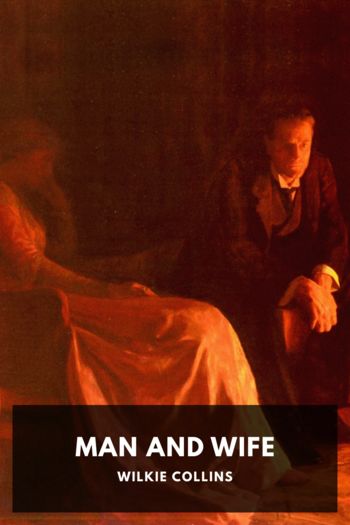Living Like Ed Ed Jr. (best ereader for pdf and epub txt) 📖

- Author: Ed Jr.
Book online «Living Like Ed Ed Jr. (best ereader for pdf and epub txt) 📖». Author Ed Jr.
And it gets worse. Where does that pesticide go when the cotton field gets watered, or when it rains? Does it wind up in the streams? Does it wind up in the water table? Of course it does.
Does some of that pesticide wind up in the clothing made from that cotton? Probably. Most of it gets washed away as the fiber is cleaned and milled, but then where does that wastewater from the cleaning process go?
The bottom line is this: Why put all that poison out there?
Organic Cotton
Fortunately, organic cotton is a good alternative to pesticide-laden cotton. Organic cotton is just like organic broccoli. It’s grown without the use of synthetic pesticides, with attention to the ecosystem and biodiversity and the health of the land and the wildlife around it. By wearing organic-cotton clothes you are ensuring that you aren’t walking around in clothes full of residual pesticides, and you’re not supporting the introduction of more chemicals into the ecosystem. That’s why I always look for organic-cotton clothing.
Sure, it costs more. But how much more? A buck? Two? For a T-shirt that I’ll be wearing next to my skin for many years, even if it’s an extra five bucks, it’s worth it to me.
I consider it a very promising sign that some of the biggest retailers on the planet have gotten involved with organic cotton. Through its suppliers, Wal-Mart is fast becoming the biggest buyer of organic cotton in the world, buying more organic cotton in a single year than was sold worldwide just a few years ago. And you know if it’s being sold at Wal-Mart, it’s not expensive, so the cost factor is no longer an issue.
Organic Clothing
It’s important to point out that organic clothing is not just limited to cotton. You can also find organic clothing made from:
• hemp • jute • silk• ramie • bamboo • wool
All of these fibers are natural, and all except silk and wool come from plants. Naturally, the plants would have to be farmed organically in order for their fibers to go into organic clothing.
Of those plant-based materials, hemp has been the most controversial. For years it was banned in the United States because Cannabis sativa, the plant whose stalk yields hemp fibers, also yields dried flowers and leaves that are better known as marijuana. Yet hemp is such a valuable fiber for making everything from rope to clothing that our Founding Fathers actually required people to grow hemp back in the 1600s. Today, organically grown hemp has become a staple of the organic-clothing industry.
Another natural fiber is jute, a relative of hemp that’s commonly used to make rope and twine and burlap sacks, as well as carpet backing and, to a lesser degree, clothing. Ramie, from the ramie plant, also known as China grass, is used to create a fabric that feels much like linen. And bamboo is a wonderful material. It’s one of the most sustainable resources, and it can be used to create a soft, silky fabric.
As for the animal-based materials, organic silk—or what’s sometimes called peace silk—is gathered from wild silkworms after the moths have emerged from their cocoons. Organic wool comes from sheep (and other animals) that have been raised in a sustainable, organic fashion.
While there is no official standard for labeling clothing organic just yet, most organic-clothing manufacturers—I won’t say all, but I sincerely hope all of them—also avoid the use of hazardous chemicals during the manufacturing process. By this I mean things like dyes and other chemical treatments that come in contact with the workers in the factory—and with your skin when you wear the clothing.
Whenever I buy new clothes, I always look for organic fabrics. I can’t find absolutely everything organic yet, but I always make a real effort to look for organic clothing of every kind. Does that mean you and I should throw out all our old nonorganic clothing? Of course not. Why would you fill a landfill with perfectly usable stuff?
I still have some old, nonorganic T-shirts that I’ll wear until they fall apart. And when they do fall apart, I’ll probably use them as rags so they can have a second life around the house or out in the garage.
Shorts and T-Shirts: Simplicity Is the Answer
I’m a simple guy, and I keep my wardrobe pretty simple: shorts and T-shirts. If it’s cool out—or if I’ve got the heat turned way down to save energy—then I throw on a flannel shirt over my T-shirt. Of course, I’m in Southern California, so I’m not dealing with snow and sleet and ice on a regular basis.
But I’ve really made a conscious choice to keep my wardrobe—and my life—simple. And because I choose to wear simple styles, it’s easy to find organic clothing that suits me.
Occasionally, I have to wear a suit. If I have to go to a Hollywood event, a premiere or an awards ceremony or some fancy-dress occasion, I wear one of the suits I bought in the ’80s and early ’90s that still fit me. These suits are old, but they’re well made and they’re wool. I’ll probably have them for a few more decades. (As I mentioned in Chapter 5, I’m mostly vegan. Some vegans won’t wear wool, but just as I eat some salmon once in a while, I do also wear wool. It’s my personal choice.)
When it is time to buy a new suit, there are eco-friendly choices. In the ’80s, it was nearly impossible to find business suits and tuxedos and dressier clothing made from organic fabrics, but it’s much easier now.
I also keep a suitcase packed and ready at all times. (Soldiers in battle-field conditions always have their packs ready to go; I’ve got my suitcase.) The suitcase





Comments (0)